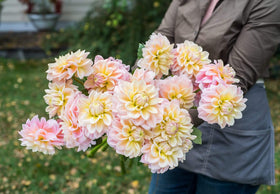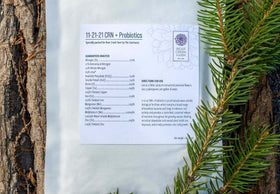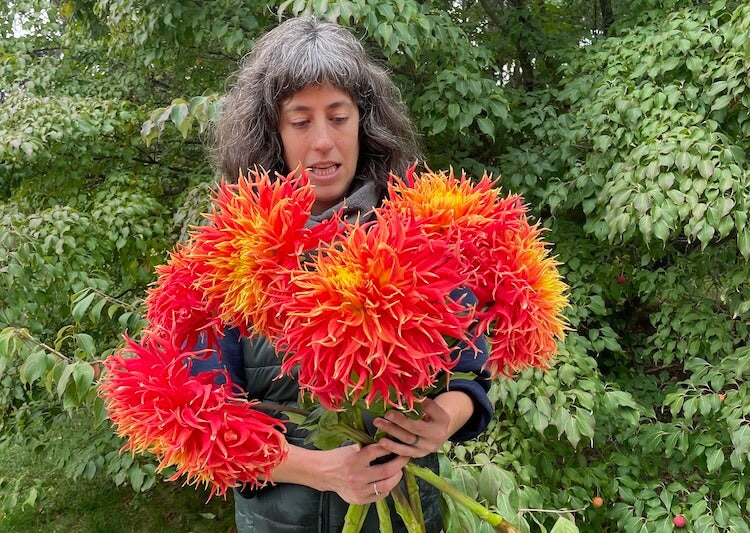At some point in every grower’s experience, a dahlia behaves differently than expected. A tuber fails to sprout even though it has a growing eye. Or it sends up a green shoot—then halts. Or worse, it seems to dissolve quietly into the soil. In these moments, it’s tempting to search for blame. Was it the tuber? The soil? Something I did? But gardening doesn’t work that way. This is not a practice of perfection, but of presence. And presence invites observation—not judgment.
What follows is a reflection of how subtle shifts in moisture, temperature, or timing can change the course of a tuber’s early life. Most of these issues are environmental, not personal. And not always final.
When the Soil Stays Silent
You’ve planted with care. You’ve waited. And still, the surface remains unchanged. No green shoot. No sign of life. In this stillness, doubt begins to take root.
- Some tubers, especially larger-flowered or heirloom types, simply take longer to wake. Dormancy doesn’t break on command. Some dahlias can take up to ten weeks to sprout.
- Nights below 60°F may quietly hold back progress, even if the days are warm and bright.
- The soil’s moisture balance must be just right—too wet, and the tuber may rot; too dry, and it may never activate.
- Pests have found it first. Eyes may be eaten below the surface, long before they ever emerge. Or a vole has eaten an entire tuber.
- Occasionally, a tuber doesn’t have the energy it needs to sprout—especially if it arrived very shriveled or depleted. (A little loss of moisture is generally okay.)
- And sometimes, an eye is visible but not viable. It appears full of promise, but never engages.
This is the hardest part of growing—the waiting without certainty. But even this uncertainty has its role. Nature asks us to observe, to trust, and sometimes be willing to adjust expectations.
When a Sprout Appears, Then Stalls
There’s a small celebration when the first green tip breaks through the soil. But days pass. And the sprout stays exactly where it is. You begin to wonder if something’s gone wrong.
- Once a sprout emerges, it shifts from relying on tuber reserves to needing consistent support on the soil for water. A brief dry spell can cause it to pause or wither.
- Low fertility, especially a lack of nitrogen, can slow early growth to a crawl.
- Even after sprouting, the tuber is vulnerable—water-logging can still lead to rot.
- Pests, particularly slugs, cutworms, or earwigs, may be feeding on new growth at night, leaving little visible trace.
- A sudden spike in temperature, before roots are well-established, can stress the plant and cause it to stall.
In many cases, a stall is not a signal of collapse—it’s just a breath. With steady conditions, many dahlias will resume where they left off.
When You Dig and Find Only Roots
Sometimes, the silence becomes too much, and you dig. Not in panic, but with quiet curiosity. You expect to find rot—or nothing at all—but instead, there are roots. White and fine. Signs of life. And yet, no shoot.
- After rain and sun, the surface of the soil may have hardened just enough to trap the emerging growth beneath it.
- Pests working just below ground level may have eaten the shoot before it had a chance to break through.
In these cases, the plant tried. It still might try again. And your gentle inspection may be just what was needed.
When a Healthy Tuber Goes Mushy in the Ground
Of all the surprises, this may feel like the most final. A firm tuber was placed into the soil with care. Now it is soft, or worse—gone.
- Waterlogged soil, especially in the first few days, deprives the tuber of oxygen and sets the stage for rot.
- Soil below 60°F slows metabolism, allowing decay to outpace growth.
- Poor drainage, especially in clay or compacted soil, may create a basin where water pools around the crown.
- Soil borne pathogens such as pythium or fusarium may invade through a minor bruise or cut.
- A layer of mulch that’s too thick, or planting too deep, may trap cool moisture around the eye, delaying sprouting and inviting rot.
- Some softness, a sign of minor moisture loss, is okay, and not cause for concern. But widespread springiness or mushiness signals active decay.
In most cases, a healthy tuber that went into the ground and rots is the sign of environmental conditions and not a sign of flaw. Occasionally, a tuber may have arrived with subtle bruising, and while still technically viable, it may have already been more susceptible to loss. None of these things indicate a “bad” tuber. They indicate that the conditions it encountered weren’t survivable for that particular body of stored energy.
When One Tuber Thrives and Its Twin Lags Behind
You planted them together—same variety, same day, side by side. One has taken off. The other has done... almost nothing. It seems unfair.
- A matter of inches can mean a difference in drainage, warmth, or even airflow.
- Soil is rarely uniform. One pocket may be rich and friable, the next more compacted or nutrient imbalanced.
- Even genetically identical tubers carry their own variability. Growth is biological, not mechanical.
This is where comparison fails us. Each plant is in conversation with its exact conditions—and the results may look very different. Nature isn't symmetrical. It's responsive.
Growing is never just about getting the result we want. It’s about being in conversation with the living world. We plant, we wait, we observe. Sometimes, things go quiet. Sometimes, they surge forward. And sometimes, they surprise us months—or even years—later. The dahlia that did poorly this season may return more vigorously next year. The one that rotted may teach us something about drainage we hadn’t yet noticed. Nature doesn’t offer guarantees—but it does offer returns, if we stay curious.
So don’t panic if a dahlia falters. Let it be one part of a much larger rhythm. The garden is not here to mirror our expectations. It’s here to deepen our understanding. Keep planting. Keep observing. And let imperfection remind you: this isn’t a system to master—it’s a relationship to tend.





Loved your essay. I always see direct correlation between gardening and life, in this case, raising children and cultivating friendships.
This was timely, thoughtful advice. Thank you for sharing your wisdom and encouragement.
So much great information in this post! Thank you for sharing.
This is exactly what I needed to read! I love reading your blog. The beauty of your words and the wisdom contained within are a gift. Thank you so much!
Very good points and several that I hadn’t taken into consideration but will now. So, thank you for this because now I will be looking at my dahlias with a new perspective instead of just throwing my hands up.
I think what frustrates most non commercial residential growers is that tubers have become so expensive that to “lose” one can break your heart and the bank !
I do want to add that you are probably my favorite grower to buy from. 👍😊